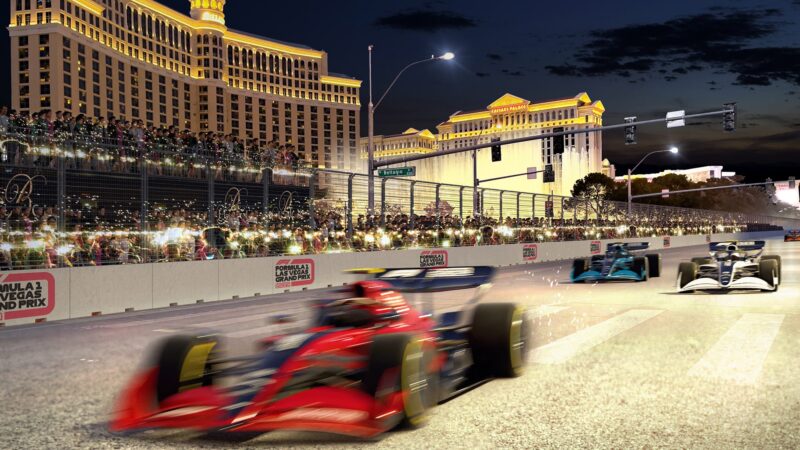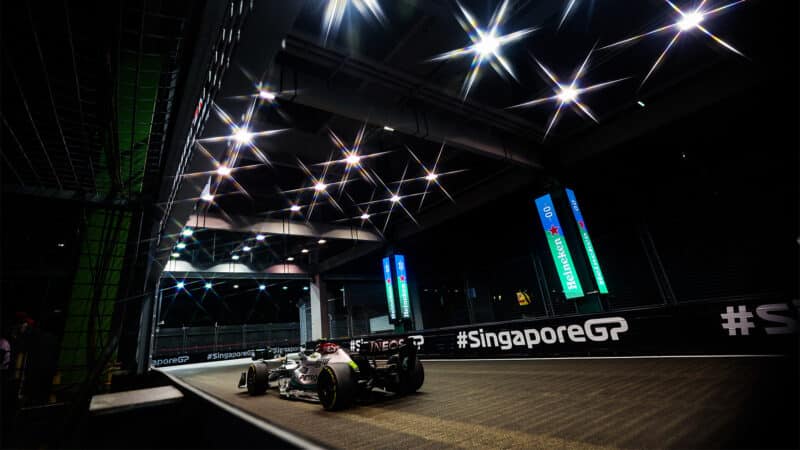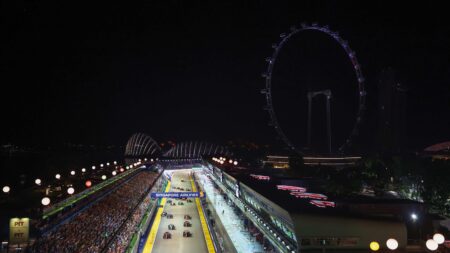And a low average speed means it takes a lot longer to complete the race distance, so it was not uncommon to see the two-hour time limit coming into play, or races at least getting within ten minutes of it and being the longest of the season whether there were interruptions or not.
In fact, the temperatures and humidity aside, interruptions were sometimes welcomed by the drivers who could get a form of breather that they otherwise wouldn’t be able to enjoy. If enjoy is the right word when you’re still sweating out up to four kilograms of your body weight.
But as Bob Dylan once wrote, the times they are a changin’, and as stunning as Singapore is visually, it is no longer the only night race on the calendar. Far from it.
Bahrain, Jeddah, Qatar, Las Vegas and Abu Dhabi all feature at least spells of racing under floodlights, and while four of those spectacles have been seen already in previous seasons, it could well be that Vegas takes the mantle of the most iconic backdrop to a night time grand prix when it joins the party in two months’ time.

Cars will race past the Ballagio fountains on the Strip in Las Vegas this November
Tilke Design and Architects
Those are developments or additions that are largely out of Singapore’s hands, aside from the fact the race organisers must have now agreed to a contract that does not specify that it must be the only night-time event in F1. But there’s one change that will impact this weekend’s race that could well prove significant in the way it affects the whole character of the grand prix, so needs to be analysed closely when plans for the future are considered.
Construction work on a new community and events venue where the floating stadium used to be means the track cannot run in front of (and under) the grandstand that used to make up the Turn 16-19 complex in the final sector.
Granted, that’s an unavoidable situation if you want to develop that part of the city, and it should only be a temporary change that might even be reversed as early as 2024 – although the overall project is likely to take until 2026 to complete – but the impact on the track layout could be notable this year.
Removing four low-speed corners doesn’t sound like much in isolation, but it has knock-on effects.




